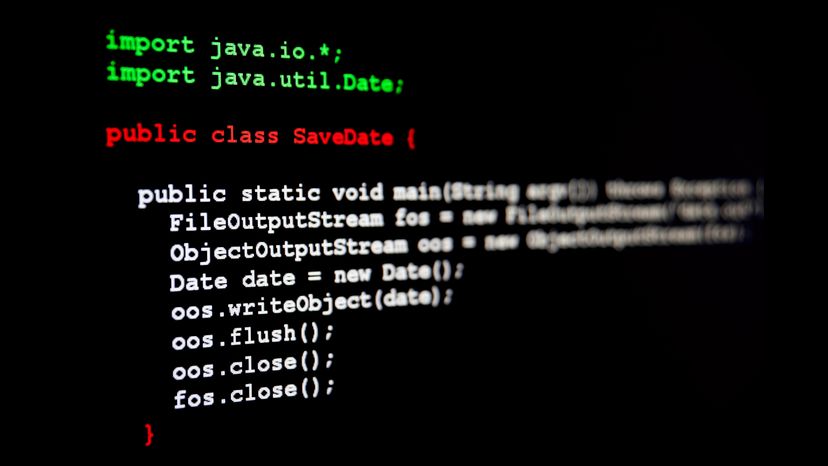In the world of modern software development, data is the lifeblood of nearly every application. For Java developers, mastering the art of connecting to, querying, and managing databases is a non-negotiable skill. The Java ecosystem offers a rich and mature landscape for database interaction, evolving from low-level, granular control to high-level, highly productive abstractions. Whether you’re building a monolithic enterprise application, a suite of Java microservices, or a simple Java REST API, understanding the different layers of Java database connectivity is crucial for writing efficient, scalable, and maintainable code.
This comprehensive guide will take you on a journey through the core technologies that power Java database operations. We’ll start with the foundational Java Database Connectivity (JDBC) API, move on to the powerful Object-Relational Mapping (ORM) standard defined by the Jakarta Persistence API (JPA) with Hibernate, and finally explore the streamlined, modern approach offered by Spring Boot and Spring Data JPA. Along the way, we’ll provide practical code examples, discuss best practices, and uncover advanced techniques to help you build robust, data-driven Java applications.
The Foundation: Understanding JDBC (Java Database Connectivity)
At the very core of all Java database interaction lies JDBC. It is a standard Java API that defines how a client may access a database, providing methods for querying and updating data. Think of it as the bedrock upon which all other, more abstract Java database frameworks are built. Understanding JDBC is essential because it reveals the fundamental mechanics of what happens under the hood, even when using higher-level tools.
What is JDBC?
JDBC provides a set of classes and interfaces that allow for database-independent connectivity. The key components of the JDBC API include:
- DriverManager: Manages a list of database drivers. It matches connection requests from the Java application with the proper driver.
- Driver: A vendor-specific interface that handles communication with the database server. You’ll need to include a JDBC driver (e.g., for PostgreSQL, MySQL, or Oracle) in your project’s dependencies.
- Connection: Represents a session with a specific database. All SQL statements are executed and results are returned within the context of a Connection.
- Statement & PreparedStatement: Interfaces used to execute SQL queries.
PreparedStatementis a sub-interface ofStatementand is preferred as it pre-compiles the SQL query and helps prevent SQL injection attacks. - ResultSet: Represents the set of data retrieved from a database after executing a query. It acts as an iterator to navigate through the data row by row.
A Practical JDBC Example
Let’s look at a classic JDBC example. First, we need a simple database schema. For this, we’ll create an employees table.
-- DDL for creating the employees table in PostgreSQL
CREATE TABLE employees (
id SERIAL PRIMARY KEY,
first_name VARCHAR(50) NOT NULL,
last_name VARCHAR(50) NOT NULL,
department VARCHAR(50),
salary NUMERIC(10, 2)
);
-- Sample data
INSERT INTO employees (first_name, last_name, department, salary)
VALUES ('Albus', 'Dumbledore', 'Management', 150000.00);Now, here is the Java code to query this table using JDBC. This example uses a try-with-resources statement, which is a Java best practice for ensuring that resources like Connection, PreparedStatement, and ResultSet are automatically closed.
import java.sql.*;
public class JdbcExample {
// Database connection details
private static final String DB_URL = "jdbc:postgresql://localhost:5432/mydatabase";
private static final String USER = "myuser";
private static final String PASS = "mypassword";
public void findEmployeeById(long employeeId) {
String query = "SELECT id, first_name, last_name, department, salary FROM employees WHERE id = ?";
// Using try-with-resources for automatic resource management
try (Connection conn = DriverManager.getConnection(DB_URL, USER, PASS);
PreparedStatement pstmt = conn.prepareStatement(query)) {
pstmt.setLong(1, employeeId); // Set the parameter to prevent SQL injection
try (ResultSet rs = pstmt.executeQuery()) {
if (rs.next()) {
// Retrieve by column name
String firstName = rs.getString("first_name");
String lastName = rs.getString("last_name");
String department = rs.getString("department");
double salary = rs.getDouble("salary");
System.out.println("Found Employee:");
System.out.println("Name: " + firstName + " " + lastName);
System.out.println("Department: " + department);
System.out.println("Salary: " + salary);
} else {
System.out.println("Employee with ID " + employeeId + " not found.");
}
}
} catch (SQLException e) {
e.printStackTrace();
}
}
}While powerful, you can see that JDBC involves a lot of boilerplate code for connection handling, statement creation, and manual mapping of ResultSet columns to Java object fields. This verbosity led to the development of higher-level abstractions.
Abstraction and Productivity: ORM with JPA and Hibernate
The boilerplate and manual object-mapping required by JDBC can become tedious and error-prone in large applications. This is where Object-Relational Mapping (ORM) frameworks come in. ORM is a technique that lets you query and manipulate data from a database using an object-oriented paradigm.
Introduction to JPA and Hibernate

The Jakarta Persistence API (JPA), formerly the Java Persistence API, is a specification that describes the management of relational data in Java applications. It provides a standard for ORM. It doesn’t do anything on its own; it requires an implementation.
Hibernate is the most popular and mature implementation of the JPA specification. It handles the mapping of Java objects to database tables and Java data types to SQL data types. By using Hibernate, you can focus on your business logic and let the framework handle the low-level JDBC code, SQL generation, and result set mapping.
Mapping an Entity
With JPA, you map a database table to a Java class called an “Entity.” This is done using annotations. Let’s map our employees table to an Employee entity.
import jakarta.persistence.*;
@Entity // Marks this class as a JPA entity
@Table(name = "employees") // Maps this entity to the "employees" table
public class Employee {
@Id // Specifies the primary key
@GeneratedValue(strategy = GenerationType.IDENTITY) // Configures the way the ID is generated
private Long id;
@Column(name = "first_name", nullable = false)
private String firstName;
@Column(name = "last_name", nullable = false)
private String lastName;
@Column(name = "department")
private String department;
@Column(name = "salary")
private Double salary;
// Standard getters and setters, constructors...
}Now, instead of writing SQL and manually parsing a ResultSet, we can work directly with Employee objects. The JPA provider (Hibernate) will translate our object-oriented operations into the necessary SQL commands behind the scenes.
Modern Java Database Interaction with Spring Boot and Spring Data JPA
While JPA and Hibernate significantly reduce boilerplate, setting them up can still involve complex XML or Java-based configuration. The Spring Framework, and particularly Spring Boot, takes productivity to the next level by simplifying this configuration and introducing an even higher level of abstraction with Spring Data JPA.
The Power of Spring Data JPA Repositories
Spring Data JPA aims to significantly improve the implementation of data access layers by reducing the effort to the amount that’s actually needed. The central concept is the Repository, which is an interface you define for your entity.
By simply creating an interface that extends JpaRepository, you get a full set of standard CRUD (Create, Read, Update, Delete) methods out of the box, with no implementation required.
import org.springframework.data.jpa.repository.JpaRepository;
import org.springframework.stereotype.Repository;
import java.util.List;
@Repository
public interface EmployeeRepository extends JpaRepository<Employee, Long> {
// Spring Data JPA will automatically generate the query for this method
// based on the method name.
// SQL equivalent: SELECT * FROM employees WHERE department = ?
List<Employee> findByDepartment(String department);
}Spring Data parses the method name findByDepartment and automatically creates the corresponding database query. This “derived query” feature is incredibly powerful for simple queries.
Custom Queries and Transactions
For more complex scenarios, you can use the @Query annotation to specify your own JPQL (Java Persistence Query Language) or native SQL query. To ensure our queries on the department column are fast, we should add an index to it in our database schema.
-- Create an index on the department column to speed up searches
CREATE INDEX idx_employees_department ON employees(department);Another critical aspect of database operations is transaction management. A transaction is a sequence of operations performed as a single logical unit of work. Spring provides a simple, declarative way to manage transactions with the @Transactional annotation. If any method within the transaction throws an exception, the entire transaction is rolled back, ensuring data integrity.

Here’s an example of a service class that uses the repository and manages transactions:
import org.springframework.beans.factory.annotation.Autowired;
import org.springframework.stereotype.Service;
import org.springframework.transaction.annotation.Transactional;
@Service
public class EmployeeService {
private final EmployeeRepository employeeRepository;
@Autowired
public EmployeeService(EmployeeRepository employeeRepository) {
this.employeeRepository = employeeRepository;
}
@Transactional // All operations in this method are part of a single transaction
public void giveRaiseToDepartment(String department, double raisePercentage) {
List<Employee> employeesInDept = employeeRepository.findByDepartment(department);
if (employeesInDept.isEmpty()) {
throw new IllegalStateException("No employees found in department: " + department);
}
for (Employee employee : employeesInDept) {
double currentSalary = employee.getSalary();
double newSalary = currentSalary * (1 + (raisePercentage / 100.0));
employee.setSalary(newSalary);
employeeRepository.save(employee); // Update the employee
}
}
}In this example, if an error occurs halfway through updating employee salaries, the @Transactional annotation ensures that all previous updates within the method are rolled back, leaving the database in a consistent state.
Best Practices and Performance Optimization
Writing functional database code is one thing; writing performant and scalable code is another. Here are some key best practices for Java database development.
Use Connection Pooling
Establishing a database connection is an expensive operation. A connection pool is a cache of database connections maintained so that the connections can be reused. This dramatically improves performance in enterprise applications. Spring Boot automatically configures a high-performance connection pool, HikariCP, by default when you include the spring-boot-starter-data-jpa dependency.
Understand Fetching Strategies

When you load an entity that has relationships with other entities (e.g., a Department entity with a list of Employee entities), JPA can either load the related entities immediately (EAGER fetching) or wait until they are explicitly accessed (LAZY fetching). Lazy fetching is generally the default and preferred strategy to avoid loading unnecessary data from the database. However, it can lead to the “N+1 select problem” if not handled carefully. Use “join fetch” in your JPQL queries to load entities and their related collections in a single query to solve this.
Leverage Database Migrations
As your application evolves, so will your database schema. Managing these changes manually is risky. Database migration tools like Flyway or Liquibase allow you to version your schema changes in SQL or XML files and apply them automatically and reliably when your application starts. They integrate seamlessly with Spring Boot.
Indexing is Key
As shown in our SQL example, proper indexing is one of the most effective ways to improve query performance. Analyze your application’s query patterns and add indexes to columns that are frequently used in WHERE clauses, joins, and ordering.
Conclusion
The Java ecosystem provides a powerful and flexible set of tools for database interaction, catering to a wide range of needs. We’ve seen the progression from the fundamental, low-level control of JDBC to the object-oriented convenience of JPA and Hibernate, culminating in the highly productive, convention-over-configuration approach of Spring Boot and Spring Data JPA. By understanding this entire stack, developers can choose the right tool for the job and write code that is not only functional but also clean, maintainable, and performant.
Your journey into Java database development doesn’t end here. As a next step, consider exploring advanced topics like reactive database access with R2DBC for building highly concurrent systems, diving deeper into Hibernate’s second-level caching for performance tuning, or mastering complex entity relationships and query optimization. By building on the solid foundation covered in this article, you’ll be well-equipped to tackle any data-driven challenge in your Java projects.
